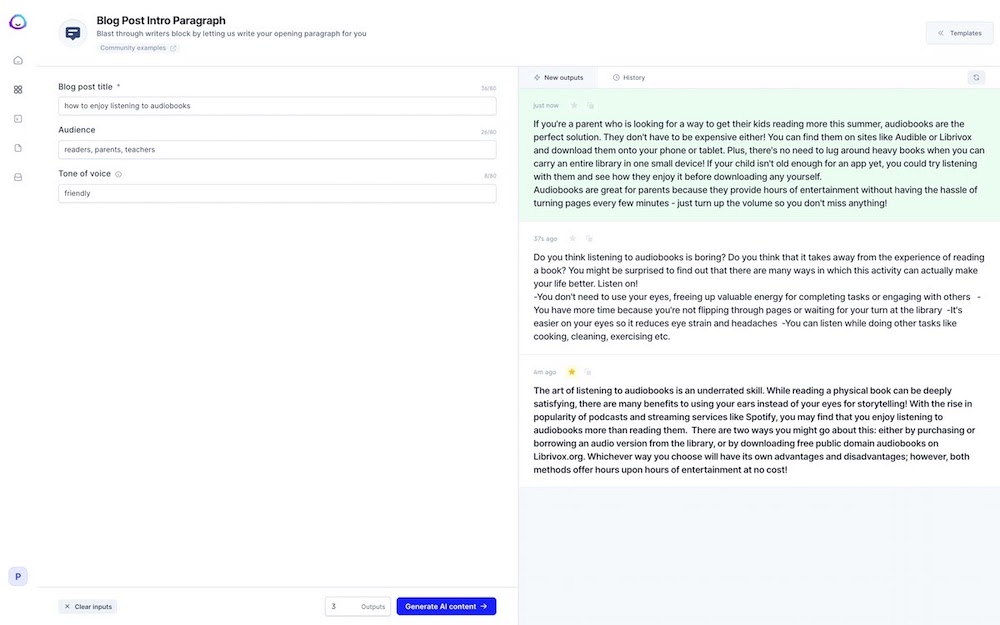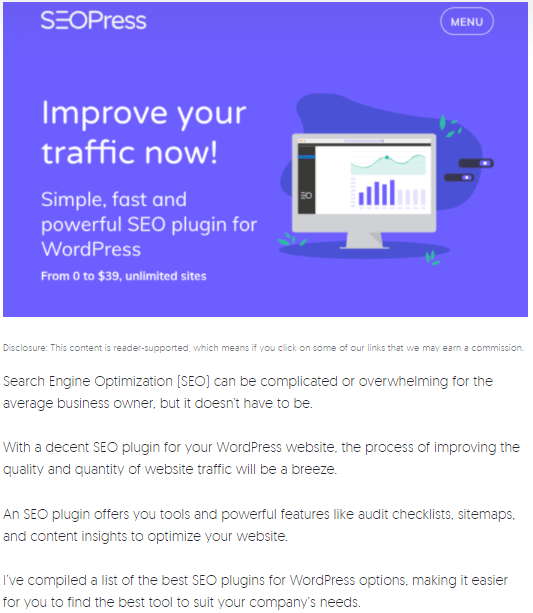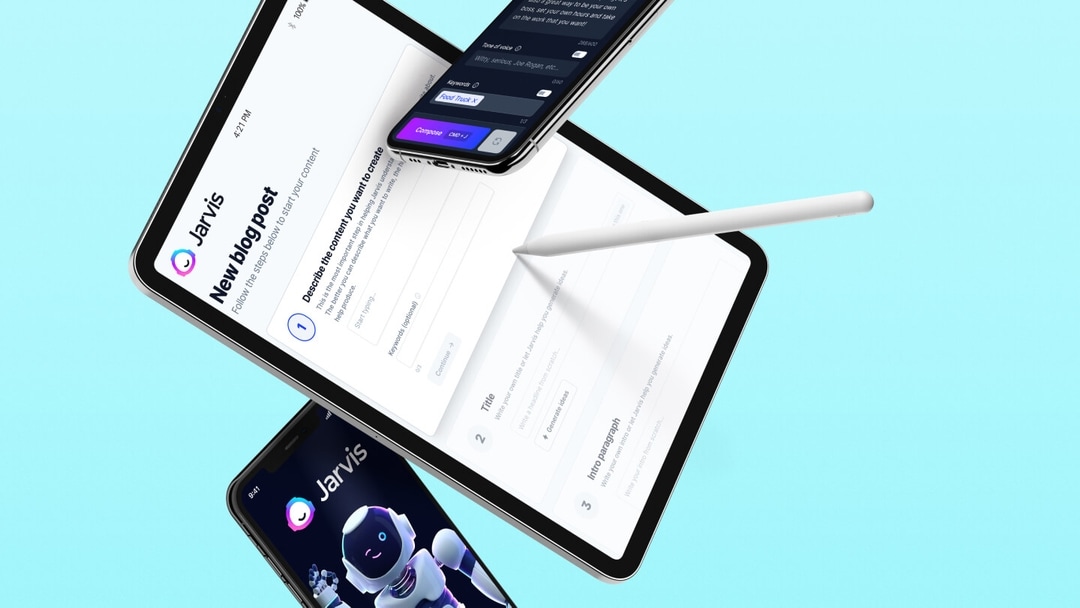Free
5 Steps to Writing Captivating Blog Introductions: Grab Your Reader’s Attention
We all know that introductions can make or break a blog post. But let’s be honest, they’re not always easy to write. That’s why we’re here to help. In this article, we’ll give you 5 steps to writing amazing blog introductions that will hook your readers from the start.
In today’s fast-paced world, our attention spans are getting shorter and shorter. If you want people to actually read your entire blog post, you need to grab them right from the beginning. And that all starts with a compelling introduction. Without it, your readers will simply move on.
You could have the best information in the world, but if your introduction doesn’t captivate your audience, it’s game over. So, let’s make sure you’re writing introductions that immediately hook your readers in and keep them engaged.
So, what makes a good blog introduction anyway?
The best introductions are the ones that grab your reader’s attention and evoke emotions. They make them want to keep reading and find out more. And by tapping into their emotions, you can even increase your chances of driving sales through content marketing.
A great introduction sets the stage for your entire blog post. It engages your reader, addresses why your post matters, highlights who it’s for, and establishes your authority on the topic. It’s the gateway to your content.
To write compelling introductions, bloggers can learn a thing or two from journalists.
NPR has identified six types of journalistic leads that can work wonders for your introductions:
1. Straight news lead: Stick to the facts and use the 5 Ws (who, what, where, when, why).
2. Anecdotal lead: Start with a captivating story.
3. Scene-setting lead: Paint a vivid picture that draws the reader in.
4. First-person lead: Share your own perspective and make the reader part of the story.
5. Observational lead: Share an observation to provide context.
6. Zinger lead: Shock the reader with a bold statement.
But that’s not all. Other hooks you can use in your introductions include interesting facts, sharing the final results of a story, using analogies or metaphors, asking questions, including a strong quote, highlighting a common problem, or using a shocking statistic. These hooks can also be great for standalone social media posts!
Want to captivate your readers with a killer blog introduction? Follow these five simple steps:
1. Speak directly to your readers using words like “you” and “your” to create a personal connection.
Example: Have you ever struggled with a WordPress template that just didn’t look right?
2. Evoke emotion by discussing how your blog post relates to your readers’ “why”. Tap into anger, frustration, excitement, and more.
Example: Figuring out WordPress templates can be frustrating and overwhelming.
3. Highlight a problem that your readers may not even know they have. Show them why your blog post is essential.
Example: Installing WordPress templates without clear instructions is extremely tricky for non-web developers.
4. Offer a glimpse of the solution without giving too much away. Use transition words to intrigue your readers and encourage them to keep reading.
Example: Follow these five simple steps when installing WordPress templates.
5. Establish your authority by including your industry expertise or experience. Show your readers why they should trust you.
Example: We’ve designed hundreds of websites ourselves, many using WordPress templates, and we know exactly how to get them looking epic.
With these steps, you’ll be able to create captivating blog introductions that grab your readers’ attention and keep them hooked!
Looking to improve your blog introductions? Here are some extra tips to take your introduction game to the next level:
Focus on that first sentence
The key to a killer blog introduction lies in a captivating opening sentence. While the rest of the introduction is important too, it’s that initial sentence that truly grabs the reader’s attention.
Start by distilling the essence of your blog into one concise sentence. If needed, begin with a few sentences and then narrow it down to the most compelling point. Use that point to hook your reader.
Save your introduction for last
Since blog introductions are crucial, it’s best to save them for the end. Why? By the time you get to writing the introduction, you’ll be well-versed in your content and have a clear understanding of how to introduce it to your reader. Take a break after completing your post and return with a fresh mind to write that introductory paragraph.
Keep it real
Readers want something they can relate to, so be authentic. Be human. Use a conversational writing style in your introduction and steer clear of formal language. You want your readers to breeze through the introduction.
Avoid overwhelming your readers
You know those people who tell you their life story within minutes of meeting them? Don’t be like that in your introduction. It’s just too much.
Don’t try to squeeze too much information into your introduction. Instead, ease your readers in with the right amount of detail to spark their interest in reading the rest of your content.
Remember, perfect introductions take time
Blog post introductions can be tricky. Sometimes you strike gold on your first try, while other times it takes multiple revisions. Don’t hesitate to rewrite your introduction completely if necessary.
Get a helping hand
Even experienced writers can benefit from tools. For example, there are Chrome extensions like Jasper that writers find useful. Jasper’s blog post intro paragraph template, powered by AI technology, helps overcome writer’s block by generating an intriguing introduction that follows all the rules of a good blog introduction. It even provides examples, making it easier for you to get started.

Learn from others
When crafting introductions, it can be helpful to see what other bloggers are doing. Take inspiration from their approach and adapt it to your own context.
Check out these three examples of good blog introductions:
- Neil Patel’s introduction captures emotion, provides a solution, and explains how the blog post helps the reader.
- Backlinko’s introduction gets straight to the point and establishes the writer’s authority with a strong example.
- Shopify’s introduction starts by highlighting a common experience, addresses a problem the reader may have, and offers a solution.

Are your blog post introductions doing their job?
The best way to gauge the effectiveness of an introduction is by measuring the bounce rate. If readers are quickly leaving the page, it’s a sign something isn’t working. But armed with the tricks we’ve discussed, you’ll have plenty of ideas to hook your readers from the start.
If you’re ever stuck, AI writing tools like Jasper can provide inspiration and help you craft compelling introductions that grab your readers’ attention right from the first sentence. Sign up and experience the difference.






























